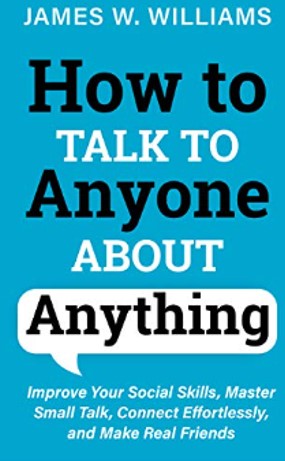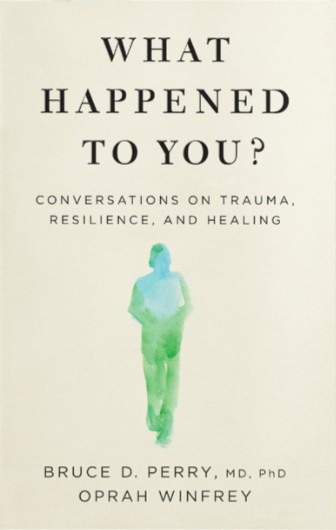
I’m often asked to provide training in conversation skills. Whether it’s for confident or commercial conversations as part of the networking skills toolkit or part of a relationship building or sales conversations. I often wonder whether the conversation skills gap was caused by the imposed isolation during the Covid lockdowns or a by-product of the digitisation of communications. I’m often asked if there are any books to supplement people’s learning – or for those who want a deeper dive into the topic. So I’ve selected three – depending on whether you are a beginner or a pro and whether you are in the UK or the USA. And here is Conversation skills book review 1 – How to talk to anyone about anything – James W. Williams (2021) for beginners. Others in the series:
- Conversation skills book review 2 – How to talk to anyone – 92 little tricks for big success by Leil Lowndes (1999, 2017) Conversation skills book review 2 – How to talk to anyone: 92 little tricks (kimtasso.com) Intermediate
- Conversation skills book review 3 – Conversational intelligence – how great leaders build trust an get extraordinary results by Judith E Glaser (2014) Conversation skills book review 3: Conversational intelligence (kimtasso.com) Advanced
How to talk to anyone about anything – James W. Williams (2021)
The sub-title of this 150 page, quick read book is “improve your social skills, master small talk, connect effortlessly and make real friends” isn’t quite achieved but it covers some important basics. There’s no information about the author in the book but it seems he overcame shyness and social anxiety to become a bestselling author, specializing in topics such as confidence, emotional intelligence and communication (I can’t track down his credentials Amazon.co.uk: James W. Williams: Books, Biography, Blogs, Audiobooks, Kindle).
It provides a brief introduction to a wide array of topics including: everything starts with you, listening skills, questions, small talk, confidence, how to tell stories and becoming an interesting person.
He argues that confidence and charisma are skills that can be learned, honed, practiced and mastered. But first you need to develop your sense of self – your mission in life and your values – and be authentic. Easier said than done but he offers an exercise to check in with yourself and a series of questions.
He points out the difference in listening to understand, rather than to respond. And suggests paraphrasing and repetition to ensure you really do listen and to ask questions and avoid judgements.
He writes about the power of questions by considering direction, clarity and understanding to achieve progression. Amongst the suggested questions when meeting someone new include: Tell me something about yourself, what was the highlight of this week, are you working on anything exciting at the moment and how did you join this industry. Tips on asking the right questions include: find the line (avoid really personal questions or sensitive topics, remember the social hierarchy (match styles) and keep questions open-ended.
The steps to a conversation with anyone are;
- First impressions – Read and write the room (verbal and non-verbal communication)
- Make the first move (be genuine, start small, create a reason to speak and don’t put pressure on yourself)
- Find the connection (seek similarities) and use mirroring.
- Address obstacles you may face (use elicitation, give a compliment or complain about something (Note: I always deter people from being negative as this can become associated with you)
The core strategies of small talk: ask questions, be proactive in your listening, minimise distractions and show enthusiasm (with energy and emphasis) or highlight how you feel. There are also comments about being around positive people (I often talk about the difference between radiators and drains!). There are helpful lists of small talk topics. He indicates that you will need to carry the conversation at first and that meaningful relationships take time to develop. He suggests you avoid the following topics: finance, religion, politics, death, sex, health and well-being, personal life gossip, offensive jokes, physical appearance and ex-partners. On ending conversations he suggests you rehearse some exit lines that leave a positive lasting impression – and he provides some examples.
Tips for being charismatic include: confidence, relatability, remember people’s names, be funny and giving. On confidence he mentions the Hebbian Principle – acting a certain way is one of the best ways to become a certain way. He also offers an exercise to imagine meeting with someone for the first time. Also mentioned in positive body language, eye contact, slowing down
There are some helpful storytelling tips around length and choosing the right details (one action, one sentence summary, one emotion). He uses Pixar’s story building structure:
- Set the foundation
- Introduction (character and their life)
- Introduce conflict
- Consequences of conflict
- Further consequences
- Conclusion
- Aftermath
Ideas on how to become a more interesting person include: read more books, switching up your routine, volunteering, embracing fear, try new hobbies and investing your tie wisely.
Some highlights:
- “No matter who you are, no matter what you did, no matter where you’ve come from, you an always change, become a better version of yourself” Madonna
- A 2015 study by the Michigan State University backed this up and found that active listening (listening with intent) will enable you to talk more clearly and concisely with others and better understand the world.
- A 2012 study by Larry D Rosen researched students and found that they could only study for three minutes at a time – laptops and phones providing the most distraction.
- Charismatic people have a way of managing their nerves, so they are confident and believe that they are supposed to e a part of the interactions they’re in.
- Research by Carol Kinsey Gorman found that listeners will have a much more positive connection with public speakers who gesture with their hands to exaggerate and communicate their points.
- A Texan study in 2013 found that people on average make eye contact between 30% and 60% of the tie but if you’re looking to make an emotional connection you need to up this to about 60% – 70% of the time.
Many of these ideas – from the work of psychologist/counselling expert Carl Rogers – can be summarised as empathy, congruence and universal positive regard: A general law of interpersonal relationships? (kimtasso.com)
Related posts
Introduction to networking skills (Video) (kimtasso.com)
Non-Verbal Communication (NVC) – the basics (Video) (kimtasso.com)
Active Listening (Video) (kimtasso.com)
Be more confident and convey confidence – top tips (kimtasso.com)
Book review “How to win friends and influence people” by Dale Carnegie (kimtasso.com)
Building rapport in the digital space (kimtasso.com)
Book review – Great networking by Alisa Grafton (kimtasso.com)
Does Zoom/Teams replace telephone calls? Telephone skills workshop (kimtasso.com)
Soft skills – Dealing with difficult conversations (kimtasso.com)
Book review: The psychology of successful women by Shona Rowan (kimtasso.com)








